
If you’ve had connection or slow-down issues while attending classes, we’ve got 5 ways to speed up Adobe Connect. Adobe Connect is a virtual classroom software that is used to allow students to interact with their instructor in real time. Instructors can demonstrate software via sharing screen, can display PowerPoint documents or other files, and can lead discussions, polls, whiteboard drawings, and many more. It’s a great tool for online education, but sometimes it might run a little slow. Keep reading to learn ways to speed up your Adobe Connect application to ensure a quality classroom experience.
#1 Choose the Right Adobe Connect App
There are three ways to connect to an Adobe Connect classroom in order to attend remote classes.
The browser application allows a user to log into an Adobe Connect classroom right in their internet browser. The major benefit of this method is that a student can attend a class from any computer even if they are unable to download or install software. That means it can be a great backup solution if you aren’t at your home or school computer. The browser application is launched automatically when a student clicks on an Adobe Connect link if they do not have the desktop or mobile app installed. The downside to the browser application is that it uses additional memory and can be much slower than using one of the native apps.
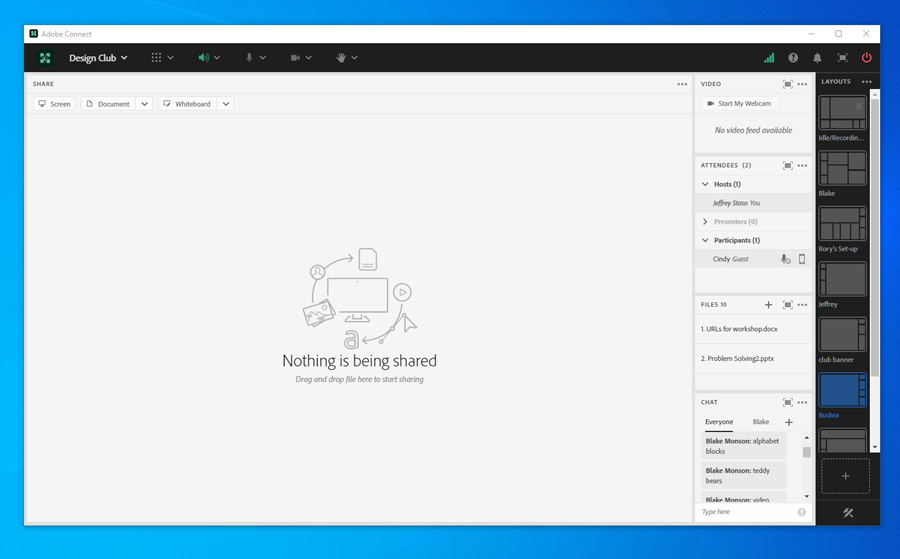
Screenshot of Adobe Connect Desktop App
The desktop application is a small software program that runs in your operating system. It is available both for Mac and PC and is easily installed on any computer you will use on a regular basis. The desktop application runs much faster than the browser application and we recommend using it unless you are on a public computer. To install the desktop application, please visit the Adobe Connect Downloads and Updates page and follow the directions.
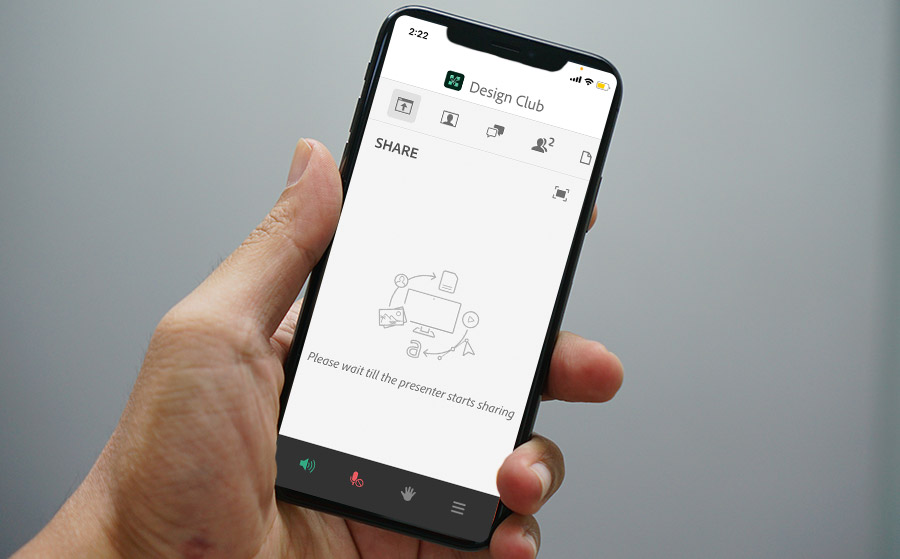
Adobe Connect iOS App
If you are using a mobile device, Adobe Connect also has a mobile application. Although we recommend attending classes via a computer, in a pinch, you may need to join via a mobile device. The app is available on both iOS and Android operating systems and allows a student to attend classes wherever they are. You can learn more about the mobile app at the Adobe Connect for Mobile Help page.
Update Adobe Connect
No matter which application you’re using to attend classes, you’ll want to be sure that you have the most recent version installed. You can always check to see if there is a new version by clicking on the question mark icon in the top right of the Adobe Connect application. Then choose Check for updates to see if there is a newer version that might improve the application performance.
#2 Monitor Your Connection
Ideally your connection status icon should be green
Having a strong internet connection is the key to a good experience in Adobe Connect. You can see how strong your signal is by checking the connection status icon in the top right corner of the Adobe Connect app. If you’re having problems hearing your instructor or the screen sharing is lagging, check the color of your connection status indicator.
Green: This is the optimum signal strength. If you are seeing a connection status of Excellent you should be at peak speeds with your internet provider and the Adobe Connect servers. If you’re still having issues, read on to try some other troubleshooting tips!
Yellow: This indicates a “fair” connection. If your connection status indicator is yellow you may experience some audio lagging or choppy video. Consider to taking some additional steps explained below to try and free up some bandwidth.
Red: This indicates a “poor” connection. If your indicator is showing red you are likely to experience audio and video issues while attending class. Try some of the additional tips to speed up your connection.
Check your Internet Connection
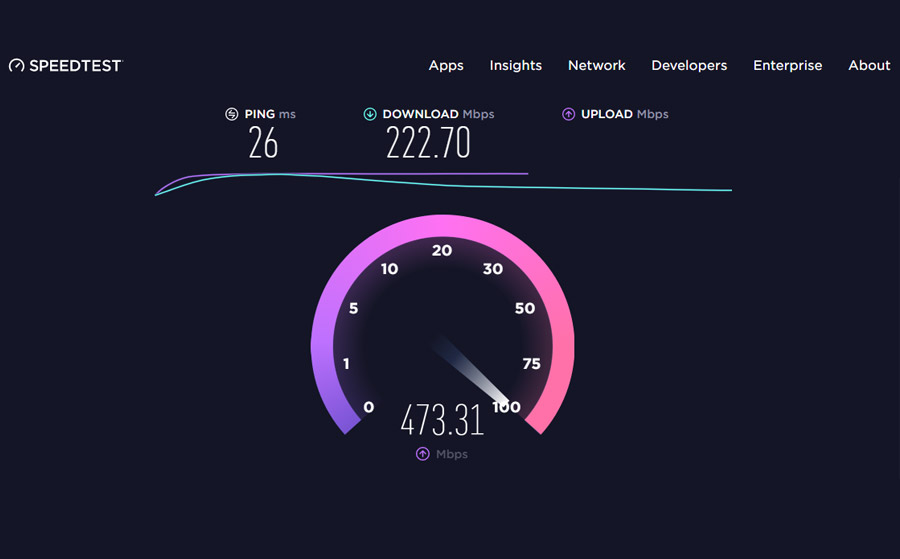
Ensure your download speed is at least 3.0 Mbps or better
In addition to the connection status icon in Adobe Connect, you can also check your internet speed through an online diagnostic tool. A tool such as speedtest.net or fast.com can give you an approximate idea of the speed of your internet connection. With Adobe Connect, the download speed is the most important metric. If you see speeds less than 3.0 megabits per second (Mbps), you will need to contact your internet service provider for assistance.
Close Other Programs
One way to try and free up both computing power and internet bandwidth is to close unnecessary programs. Old unused browser windows especially can be memory and internet hogs. While attending class, try closing any web browsers, online games, or other applications that might be using your internet connection. If you are seeing a low connection in Adobe Connect or in your download speeds, consider asking kids or housemates to refrain from using the internet while you are attending class.
#3 Keep Your Computer Running Smoothly
Adobe Connect issues can be caused by computer issues. Often if a computer is working too hard you can hear the fans spinning loudly. Check if your computer is running smoothly by opening the task manager.
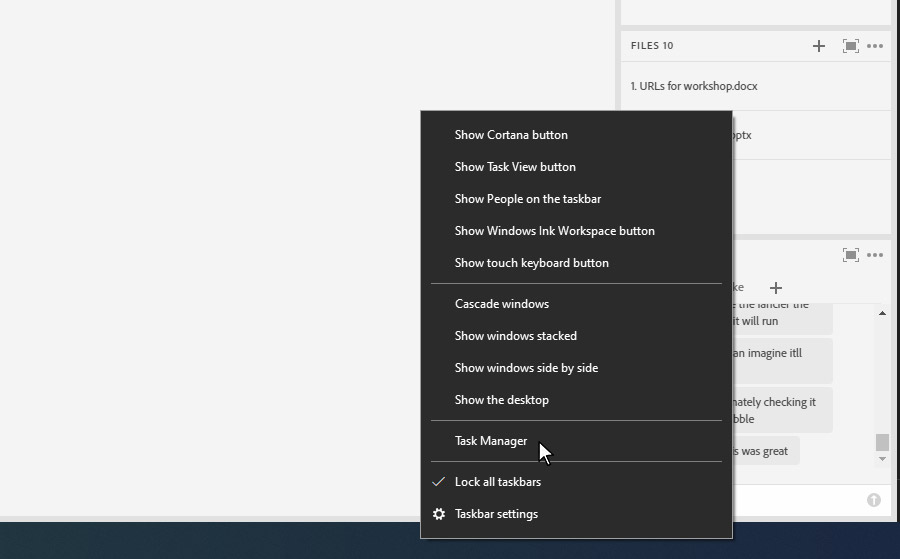
You can also open the Task Manager with ctrl + shift + esc
Right-click the task bar at the bottom of your screen and select Task Manager. If it doesn’t look like the screenshot below, be sure to click “More details” near the bottom of the task manager.
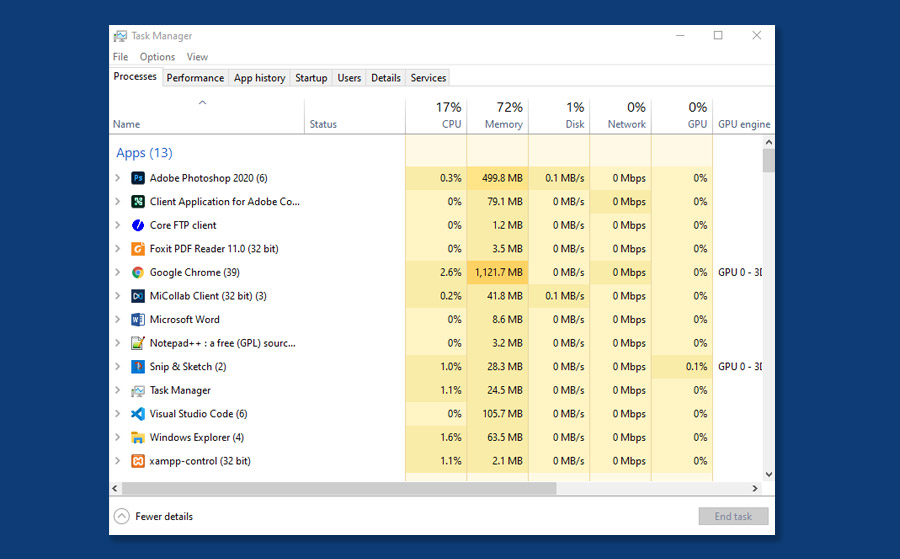
The task manager shows the programs running on your computer
If your CPU and Memory percentages are above 70% or 80% you may need to close unnecessary programs or browser tabs. If you are a Laurus College student and your CPU and Memory continues to run above 70% or 80%, please contact the Laurus College IT Department for assistance.

Having multiple webcams shared at the same time can cause slowdowns in student and instructor internet connections
#4 Ask Your Instructor to Reduce Sharing Quality
If none of the above options have helped or if you are on a slow or restrictive internet connect, it might be helpful to have the instructor reduce the quality. Instructors are able to change the quality of webcams and/or screen sharing.
In addition, It may also be helpful to reduce the screen sharing quality if another student is presenting that has a slow or restrictive internet connection.
#5 Contact Laurus College Tech Support
Finally, Laurus College students always have the option of contacting our IT department for assistance. Our IT Help Desk is available free of charge to all Laurus College students and our technicians are eager to help you solve any and all computer issues.
- Computer Hardware Issues
- Assistance in locating courses, grades, or other information on the portal
- Password Resets
- Connection Issues
- Computer Speed or Malware Problems
If you are a student, you can contact Laurus College IT support at support@tinab22.sg-host.com or call us at 805-267-1633 (8am-5pm) or 805-719-6570 (12pm-9pm)

Want to Learn to be an IT Professional?
If you’re ready to move up and create a brighter future with a rewarding new career or advance in your current job, the IT industry continues to expand and has a high demand for skilled specialists.
Looking for the best path to becoming a Cisco Certified Network Associate or Network Professional? Laurus College’s Information Technology Systems Management program can get you there. Through programs led by industry professionals, Laurus College continues to help motivated people gain the skills, experience, and ongoing support to pursue successful careers.
